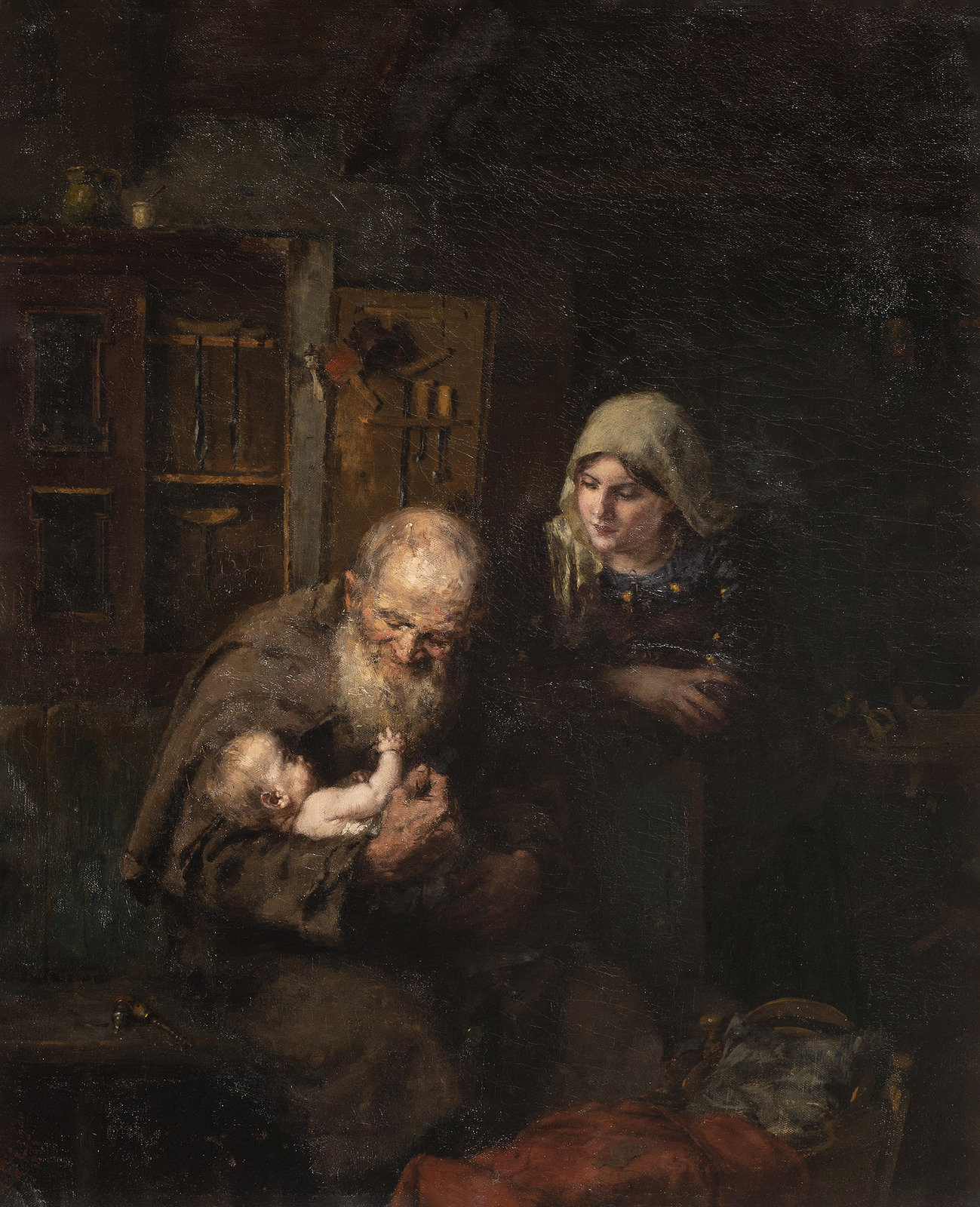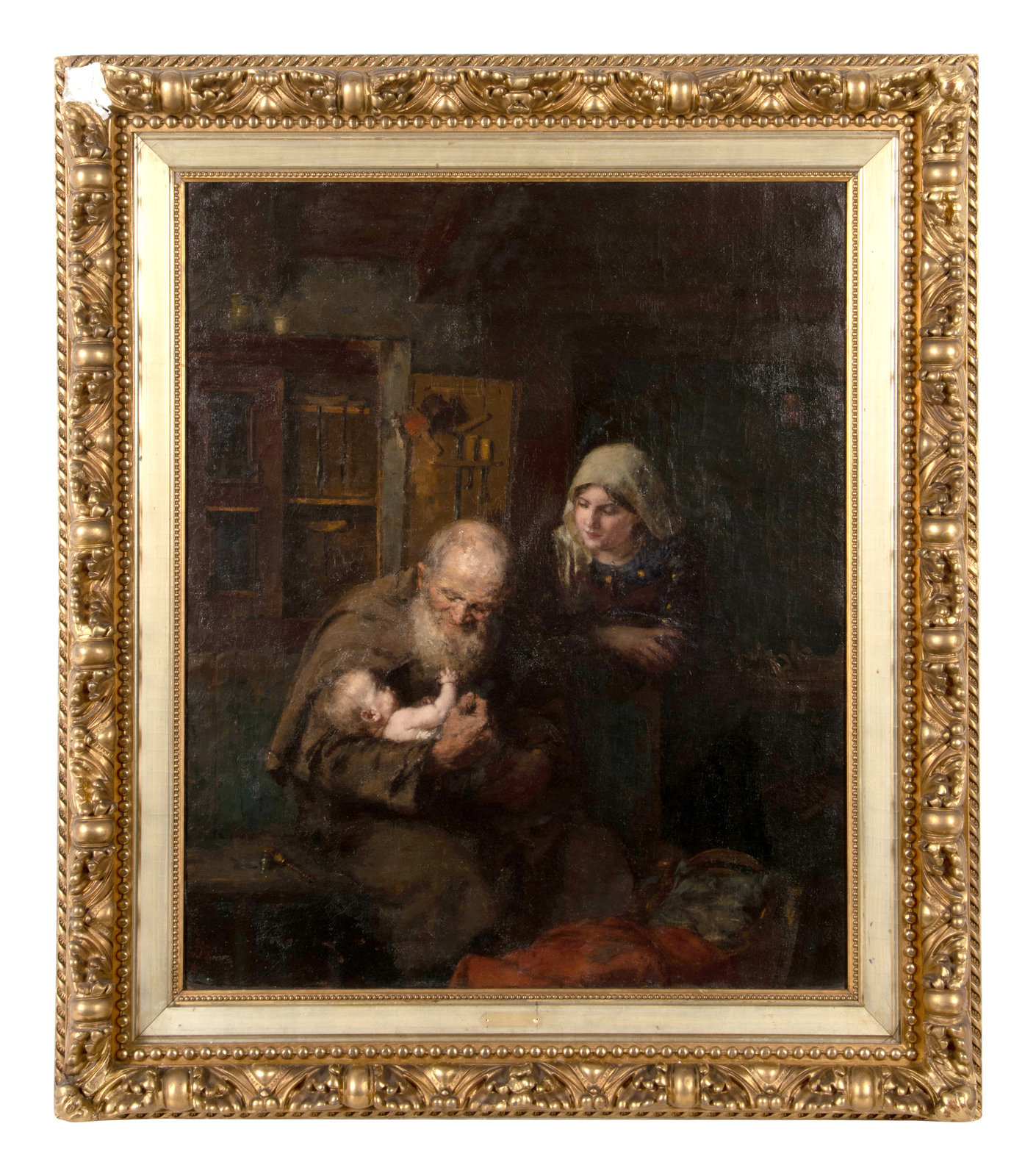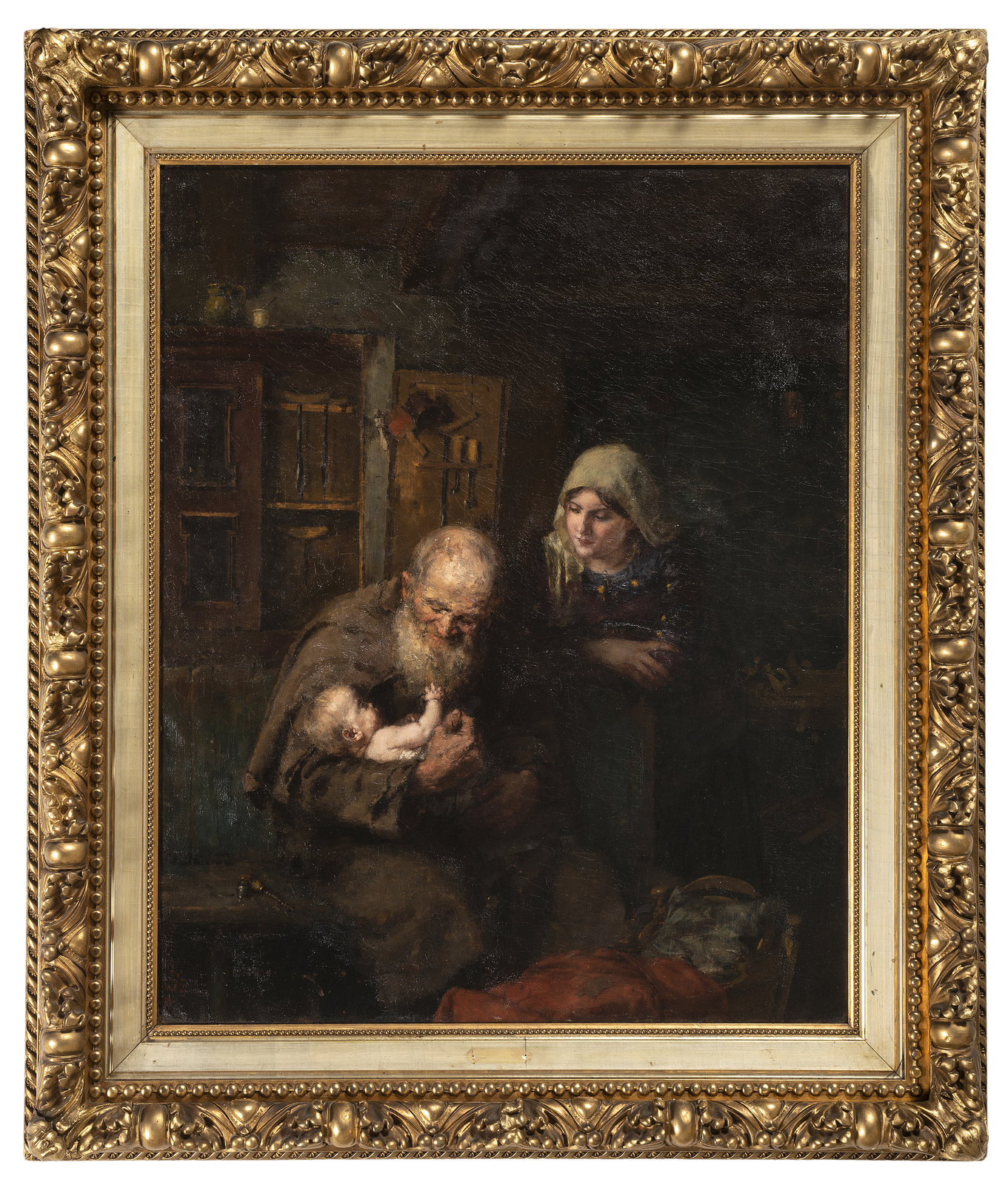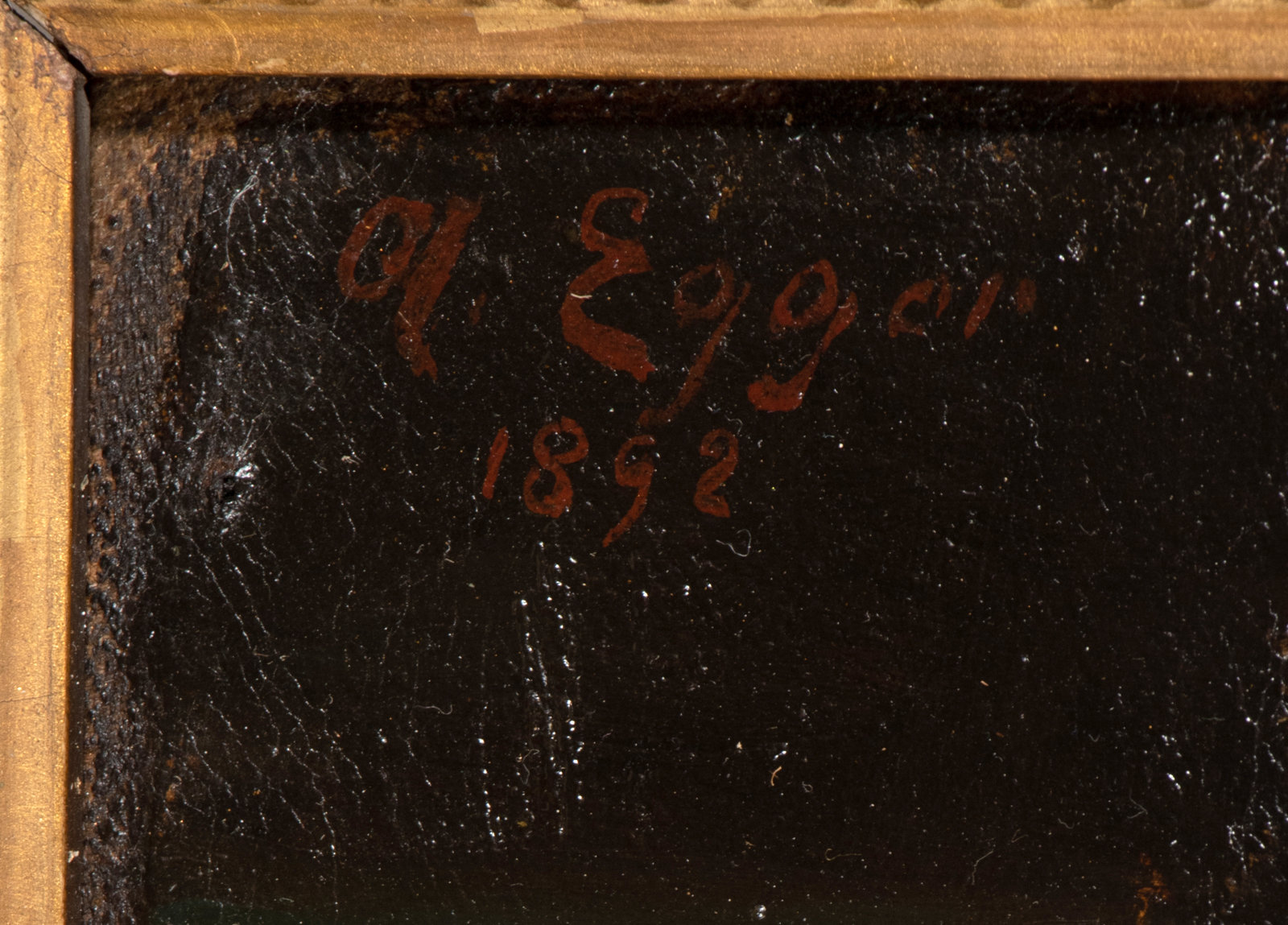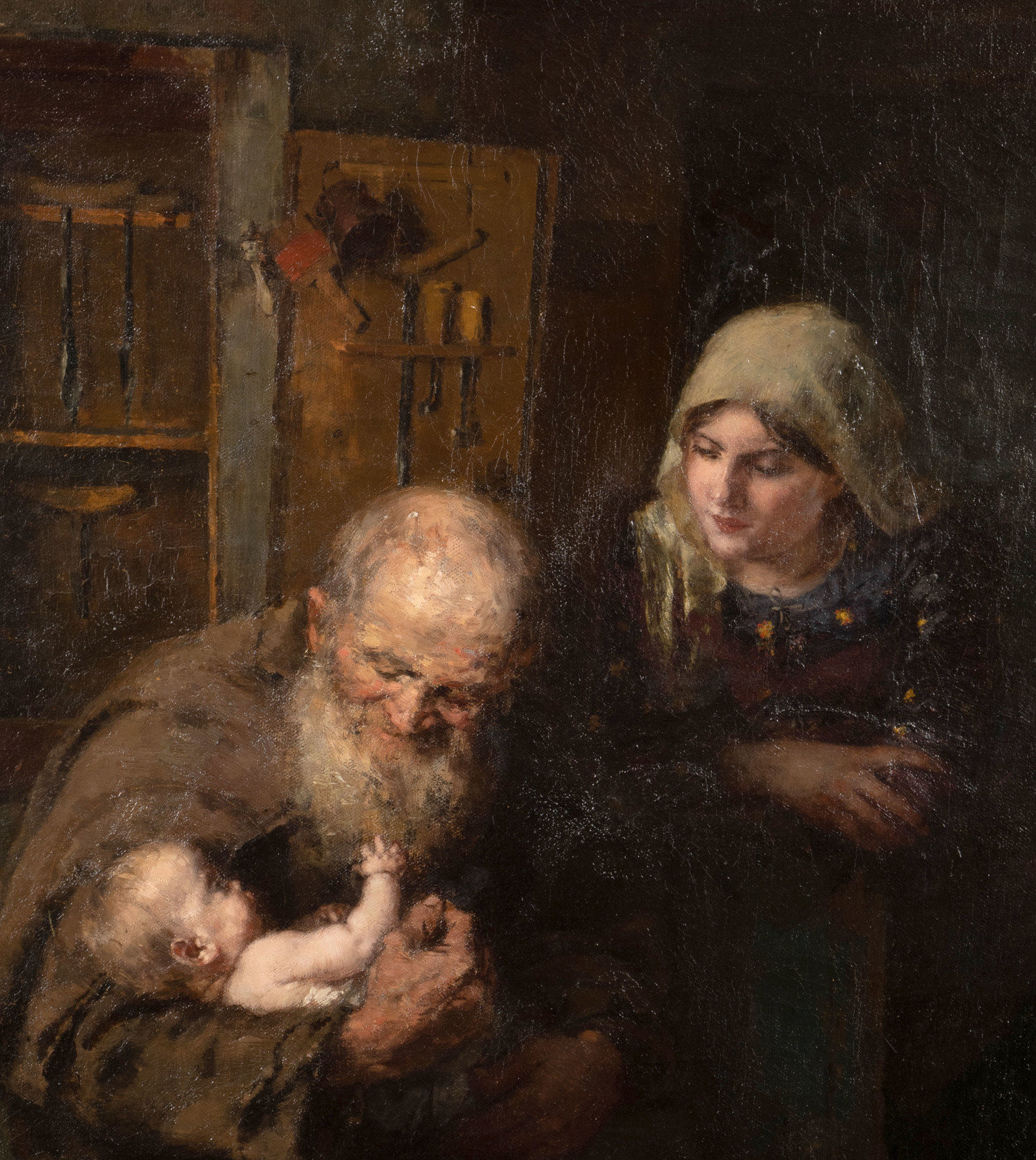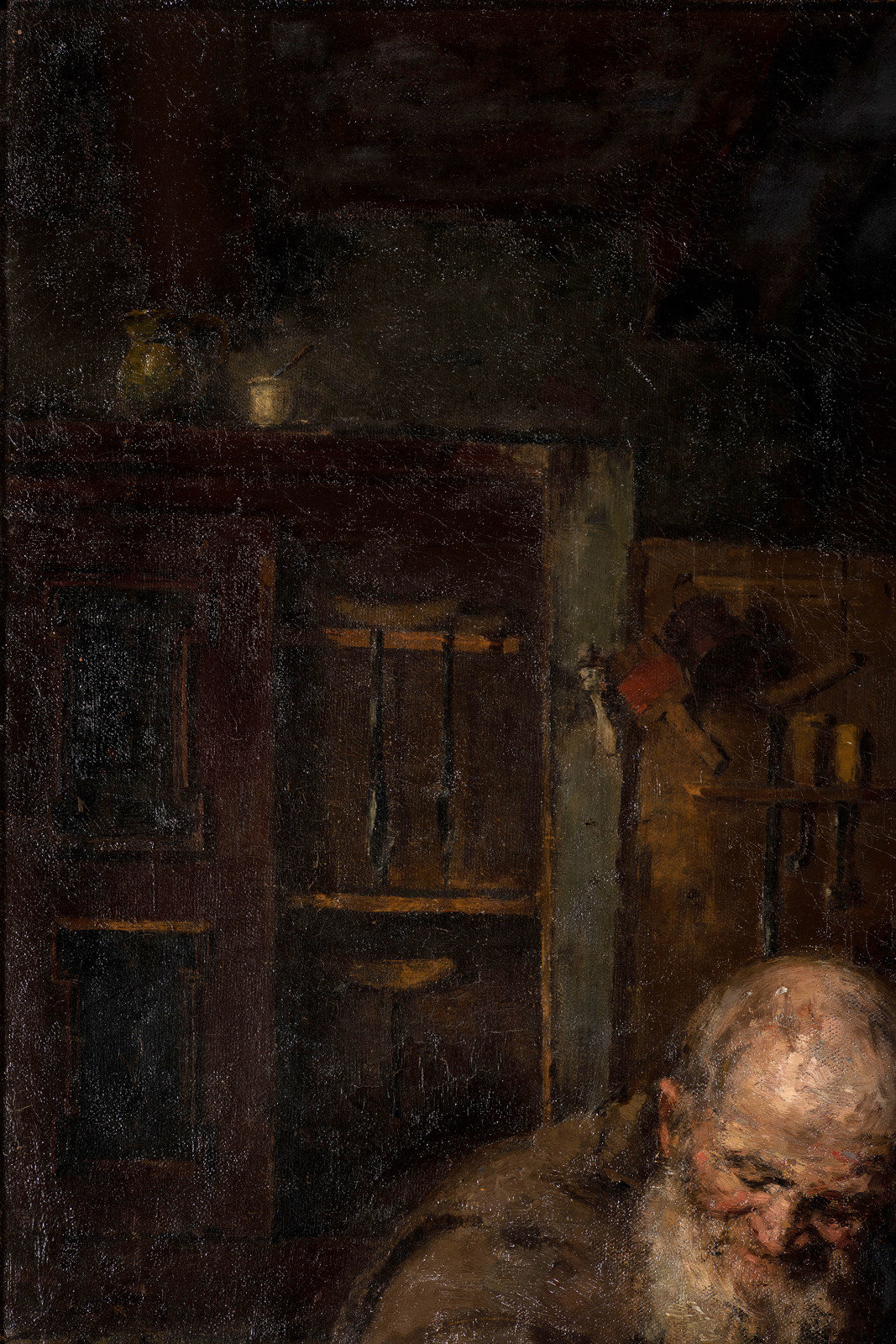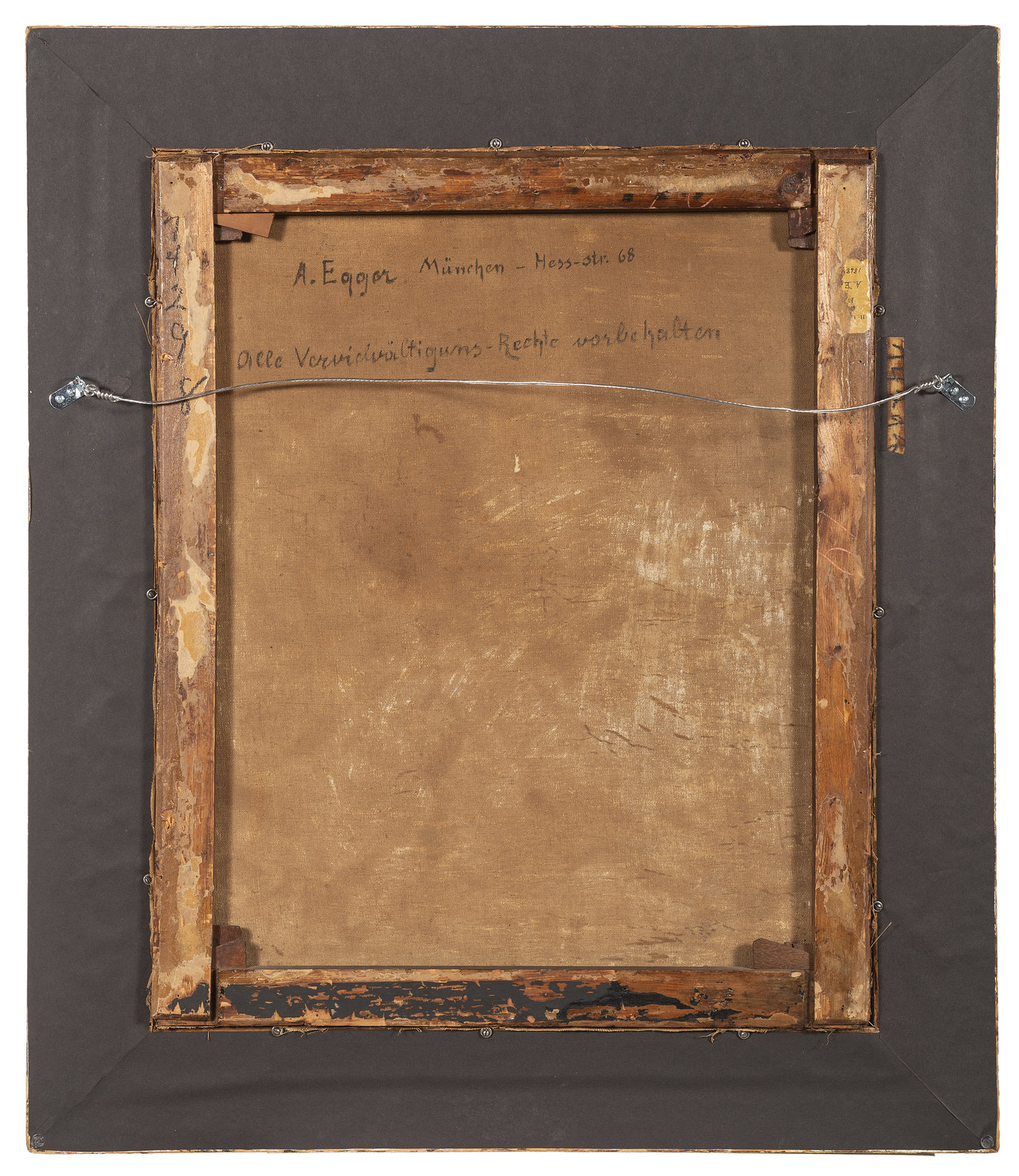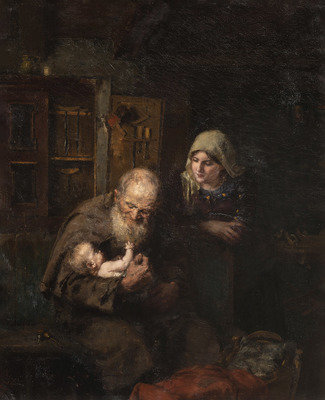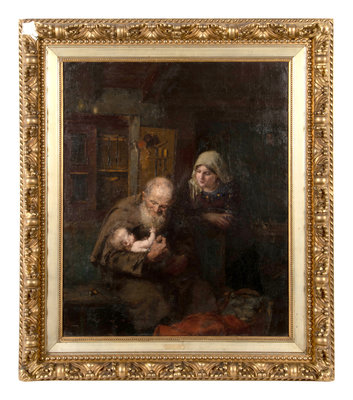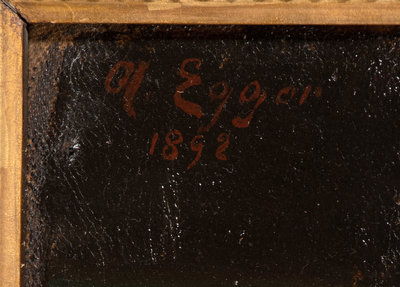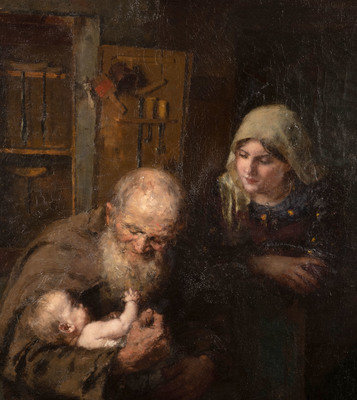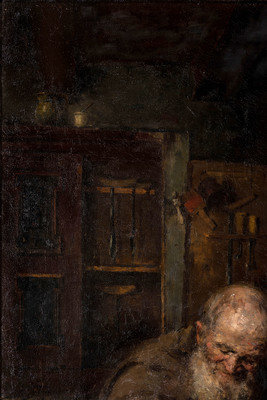Albin Egger-Lienz
(Austrian, 1868–1926)
Die Heilige Familie
, 1892
Sale 1113 - American & European Art
Dec 7, 2022
10:00AM CT
Live / Chicago
Estimate
$25,000 -
$35,000
Sold for $31,250
Sold prices are inclusive of Buyer’s Premium
Lot Description
Albin Egger-Lienz
(Austrian, 1868–1926)
Die Heilige Familie
, 1892oil on canvas
signed A. Egger and dated (lower left); signed and inscribed (verso)
25 x 30 1/2 inches.
This lot is located in Chicago.
Provenance:
The Artist, sold by 1894
John Richards Maddox (1922-1999), Hartford City, Indiana
By descent to James Maddox (1924-2016), brother of the above, New Castle, Indiana
By descent to Jane Maddox (1926-2021), wife of the above
Acquired from the above by the present owners
Exhibited:
Munich, Glaspalast, June 1, 1892, no. 493
Literature:
Curt H. Weigelt, Albin Egger-Lienz, Berlin, 1914, p. 53
Giorgio Nicodemi, Albino Egger-Lienz, Brescia, 1925, p. 32
Josef Soyka, A. Egger Lienz. Leben und Werk, Vienna, 1925, p. 61
Heinrich Hammer, Albin Egger-Lienz, Innsbruck/Vienna/Munich, 1930, p. 260, no. 35
Wilfried Kirschl, Albin Egger Lienz, 1868-1926 : das Gesamtwerk, Vienna, 1996, vol. 2, p. 508, no. M70, illus.
Lot note:
The painter Albin Egger-Lienz would become one of the forerunners of Austrian Expressionism of the early twentieth century, with its emphasis on monumental, stylized forms along with bold outlines and blocks of color. This very early work, Die Heilige Familie (The Holy Family) is painted in a dramatically different style than that which Egger-Lienz would later be known, but nevertheless exemplifies artistic themes that would remain important to him throughout his life: the glorification of the peasant class and moments of religiosity underscored with strong allusions to the existing western canon.
Painted when the artist was just 24 years old, while still attending the Munich Academy of Art, Die Heilige Familie depicts a sparse interior scene of three people: a baby lovingly held by an elderly man looked on by a younger woman, who leans over a chair so as to better watch the child as he plays with the man’s beard. A cabinet of tools behind the trio and a few pieces of furniture, including a small bassinet in the right foreground, make up the otherwise plain, dimly lit space.
These types of early rustic scenes were in part influenced by Egger-Lienz’s professor, mentor, and fellow Tyrolean Franz Defregger, known for his history paintings and genre scenes. A shared local pride of the western Austrian region of Tyrol would lead Egger-Lienz to add the hyphenated “Lienz” to his family name of Egger in 1891, after the town of Lienz, from which he was born only a few kilometers outside. This stylization of his name was still not widely used by him by the time Die Heilige Familie was painted, and the work is still signed “A. Egger”.
This genre scene could be of any humble family if not for the faint halo around the baby’s head, which elevates the figures in the baby’s identification as the Christ Child and then, in line with historical western depictions of the Holy Family, the man and woman as St. Joseph and Mary, respectively. These illuminated figures in this otherwise dark scene emphasize the celebration of the sacred through the depiction of the mundane: a characteristic of Egger-Lienz’s early work while also a prescient theme in later works like his masterpiece Pietà of 1926 (Leopold Museum, Vienna) in which he placed a dead, Christ-like figure amid the context of the local peasantry.
Die Heilige Familie, in addition to being a particularly good example of Egger-Lienz’s work, was also one of his early successes: shown at the Munich Glaspalast in June 1892, he was awarded a small silver medal for the work from the Munich Academy. Egger-Lienz would continue with a similar painting style of local people engaging in daily life, often with a Catholic undertone, while he lived in Munich. For example, he submitted Karfreitag (Holy Friday) (Belvedere, Vienna) to the Academy the following year, which won another silver medal. The artist’s style gradually began to shift from this early naturalism to his eventually more-recognized style after he moved back to his native Austria in 1899, becoming more expressive and monumental following exposure to artists like Jean-François Millet and Ferdinand Hodler. But this early and tenderly painted work remains an important example of the foundation of Egger-Lienz’s artistic identity and his preoccupation with the ideal of the rustic class and its ability to exemplify the divine.
Condition Report
Framed: 40 x 34 3/4 inches.
The physical condition of lots in our auctions can vary due to
age, normal wear and tear, previous damage, and
restoration/repair. All lots are sold "AS IS," in the condition
they are in at the time of the auction, and we and the seller make
no representation or warranty and assume no liability of any kind
as to a lot's condition. Any reference to condition in a catalogue
description or a condition report shall not amount to a full
accounting of condition. Condition reports prepared by Hindman
staff are provided as a convenience and may be requested from the
Department prior to bidding.
The absence of a posted condition report on the Hindman website or
in our catalogues should not be interpreted as commentary on an
item's condition. Prospective buyers are responsible for
inspecting a lot or sending their agent or conservator to inspect
the lot on their behalf, and for ensuring that they have
requested, received and understood any condition report provided
by Hindman.
Please email fineart@hindmanauctions.com for any additional information or questions you may have regarding this lot.
